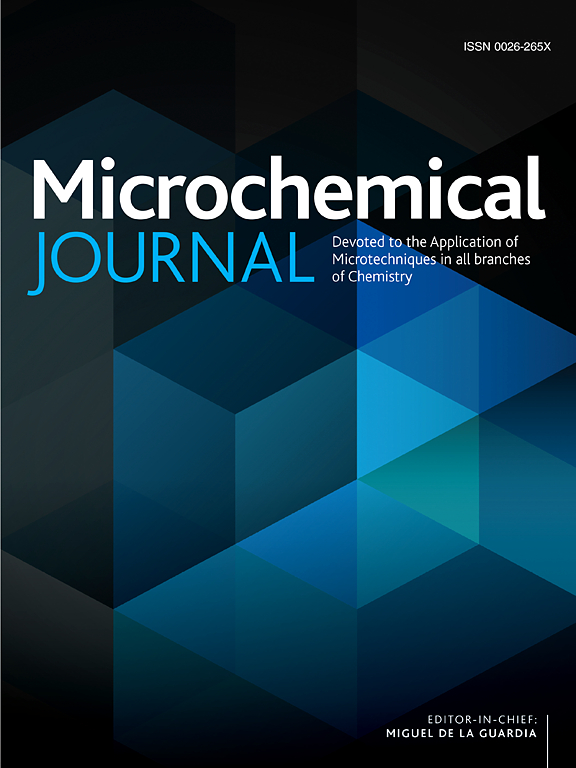RDA-direct targeted flavonoids profiling strategy combined with fingerprinting and chemometrics for quality evaluation of Changshan Huyou flower
IF 4.9
2区 化学
Q1 CHEMISTRY, ANALYTICAL
引用次数: 0
Abstract
The Changshan Huyou flower (HYF) derived from the bud of Citrus changshanhuyou Y. B. Chang is rich in flavonoids and holds significant potential for food development. However, inadequate clarification of the chemical basis and lacked quality control standards hindered its further in-depth utilisation. Herein, a novel Retro Diels-Alder (RDA)-direct strategy was proposed for flavonoid subclass profiling. Through extracting characteristic 1,3A+, 1,3B+ and 0,2B+ ions from MS/MS spectrum, the signal-to-noise ratio can be improved up to 500 times, resulting in higher capacity of identification. Combined with relative retention time, characteristic diagnostic fragment ions, literature data and standard substance comparison, flavonoid subclass skeleton was unambiguously ascertained, with a total of 23 flavonoids (15 first reported) identified from HYF. Furthermore, quality of HYF was evaluated by high-performance liquid chromatography fingerprinting and integrated chemometrics. The similarity (> 0.944) indicated the stable quality of 20 HYF batches. Four potential quality markers including neoeriocitrin, naringin, hesperidin and neohesperidin were screened and quantified with high sensitivity (LOD, 0.039–0.442 μg/mL), satisfying precision and repeatability (RSD < 2.88 %), and pinpoint accuracy (recovery, 97.72 %–100.44 %). These markers exhibited high content levels ranging from 0.133 %–1.479 %, 3.637 %–5.146 %, 0.021 %–1.422 % and 4.978 %–9.756 %, which were closely linked to the quality of HYF that fluctuated at different growth stages. This research may offer a novel strategy and comprehensive guideline for quality evaluating of HYF and other herbal materials containing flavonoids.

求助全文
约1分钟内获得全文
求助全文
来源期刊

Microchemical Journal
化学-分析化学
CiteScore
8.70
自引率
8.30%
发文量
1131
审稿时长
1.9 months
期刊介绍:
The Microchemical Journal is a peer reviewed journal devoted to all aspects and phases of analytical chemistry and chemical analysis. The Microchemical Journal publishes articles which are at the forefront of modern analytical chemistry and cover innovations in the techniques to the finest possible limits. This includes fundamental aspects, instrumentation, new developments, innovative and novel methods and applications including environmental and clinical field.
Traditional classical analytical methods such as spectrophotometry and titrimetry as well as established instrumentation methods such as flame and graphite furnace atomic absorption spectrometry, gas chromatography, and modified glassy or carbon electrode electrochemical methods will be considered, provided they show significant improvements and novelty compared to the established methods.
 求助内容:
求助内容: 应助结果提醒方式:
应助结果提醒方式:


